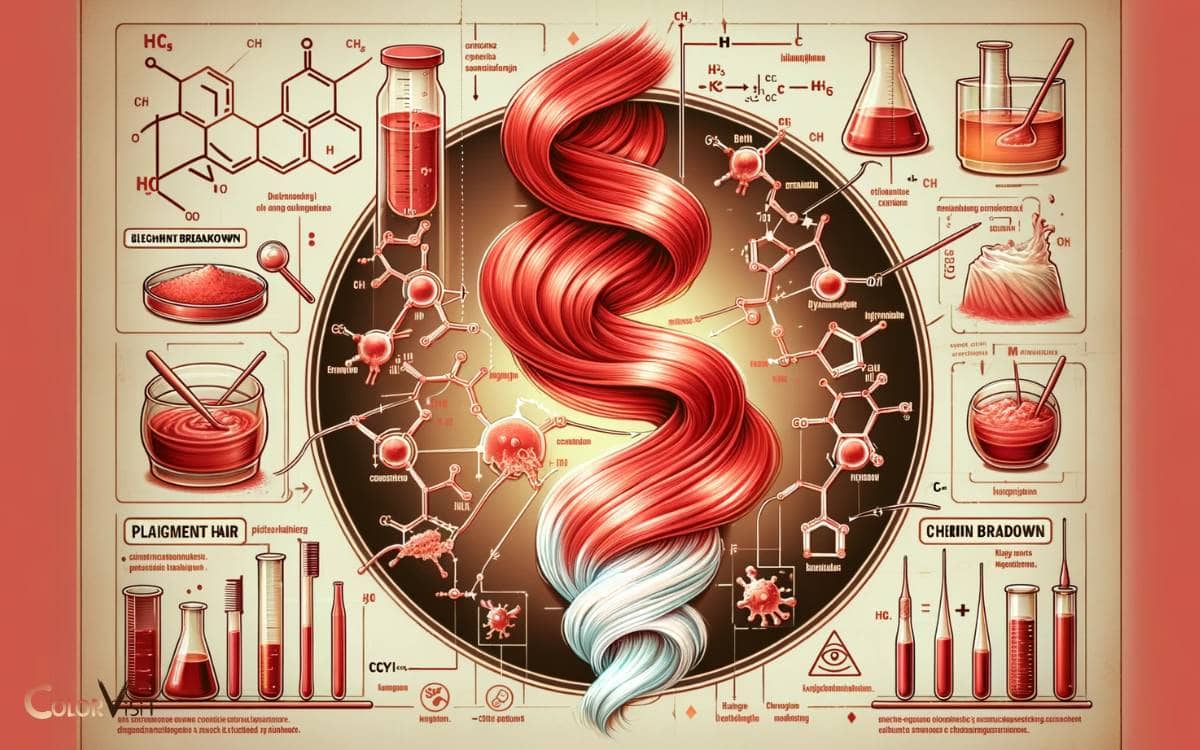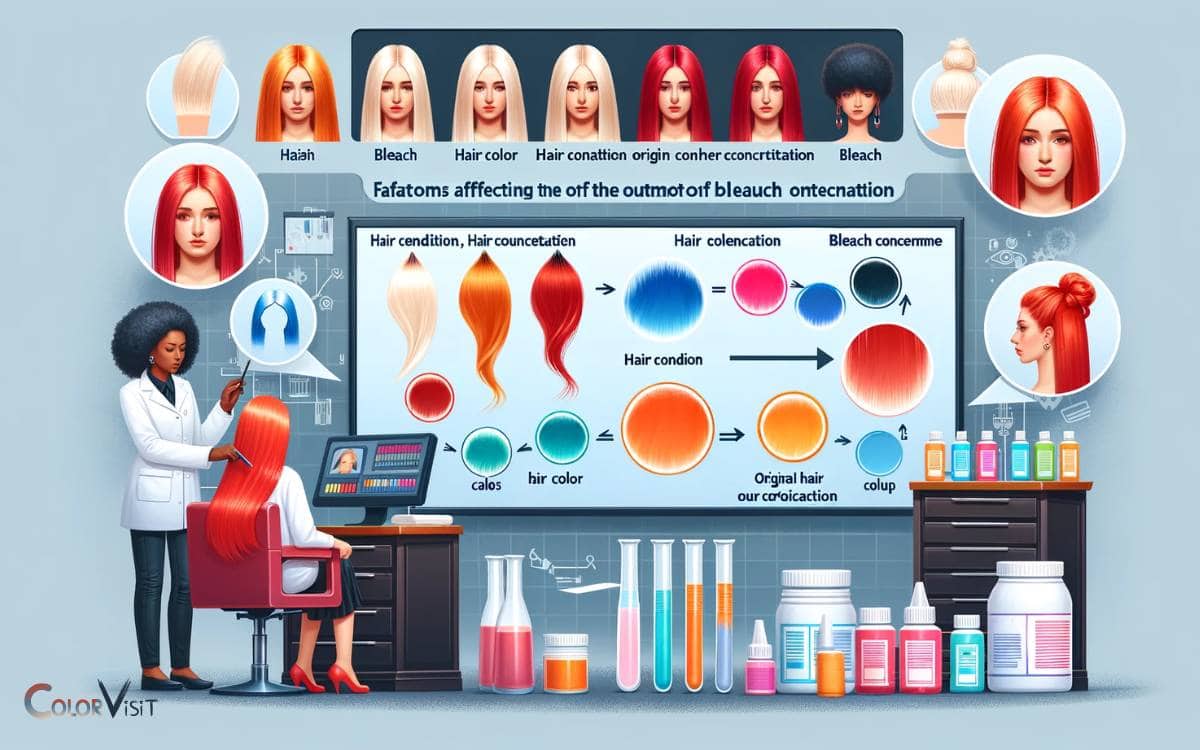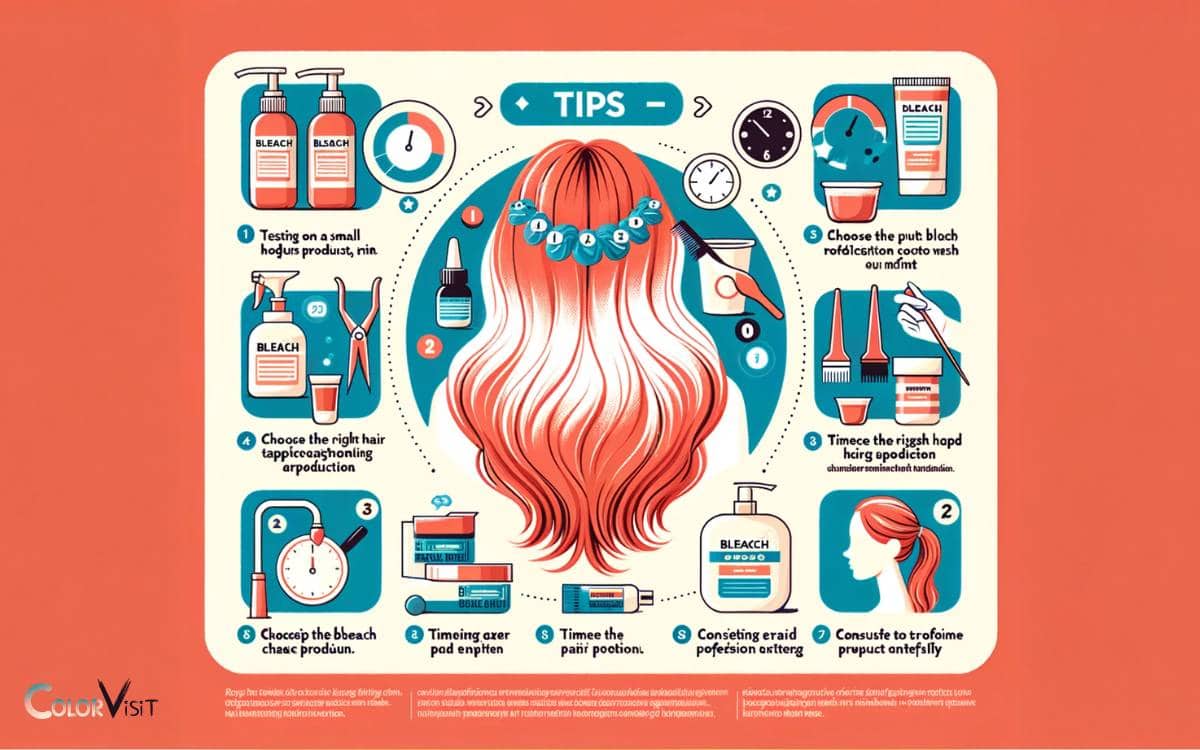If You Bleach Red Hair What Color Will It Turn: Orange!
When you bleach red hair, it typically turns an orange or brassy color. The exact shade depends on the original red tone, the type and strength of the bleach used, and the duration of the bleaching process.
Bleaching red hair involves a chemical reaction that removes the hair’s natural pigment, called melanin.
This process can be unpredictable because red hair contains a strong red pigment known as pheomelanin, which is more resistant to bleaching than the eumelanin found in darker hair colors.
Here’s a general idea of what to expect:
Achieving the perfect bleached look from red hair requires precision and an understanding of hair chemistry.
Consulting a professional colorist can help ensure the best results while minimizing damage to your hair.
Key Takeaway
Understanding the Science of Bleaching Red Hair
The process of bleaching red hair involves the oxidation of melanin pigments within the hair shaft, leading to a gradual lightening of the red hue.
When red hair is bleached, the red pigments are broken down, and the hair goes through various color stages before reaching a lighter shade.
As the bleach penetrates the hair shaft, it dissolves the natural red pigments, exposing the underlying warm tones.
These warm tones then progress through stages of orange and yellow before reaching a pale yellow or almost white color.
Understanding the science behind this process is crucial for achieving the desired hair color when bleaching red hair.
Innovation in bleaching products and techniques continues to advance, offering more options and control in the transformation of red hair to lighter shades.
Factors Affecting the Outcome of Bleaching Red Hair
Several factors significantly impact the final result when bleaching red hair. The natural shade of red, the condition of the hair, and the type of bleach used all play a crucial role in determining the outcome of the bleaching process.
The table below outlines these factors and their effects on the bleaching outcome:
| Factors | Impact on Bleaching Outcome |
|---|---|
| Natural Shade of Red | Darker red shades may require multiple bleaching sessions to achieve desired lightness. Lighter red shades may turn orange or yellow during the bleaching process. |
| Hair Condition | Healthy, well-moisturized hair is more likely to bleach evenly and maintain its strength. Damaged or dry hair may experience uneven bleaching and increased breakage. |
| Type of Bleach Used | Different types of bleach have varying strengths and formulations, which can affect the speed and extent of color lift. |
Potential Color Transformations During the Bleaching Process
Factors such as the natural shade of red and the condition of the hair significantly influence the potential color transformations that may occur during the bleaching process for red hair.
The natural shade of red hair can vary from vibrant copper tones to deeper burgundy hues, and this impacts the outcome of the bleaching process.
Lighter red shades may transition to a vibrant orange or even a pale yellow during bleaching, while darker red tones may progress through various stages of red, orange, and gold before reaching a lighter shade.
Additionally, the condition of the hair, including its porosity and previous chemical treatments, can affect how the hair responds to the bleaching agents, potentially resulting in variations in color transformation.
Understanding these factors is crucial for achieving the desired color results when bleaching red hair.
Tips for Achieving Desired Results When Bleaching Red Hair
Achieving the desired results when bleaching red hair depends on understanding the natural shade and condition of the hair, as well as employing proper techniques and products.
To ensure a successful outcome, consider the following tips:
- Conduct a strand test before bleaching to anticipate the potential outcome.
- Use a high-quality bleaching product specifically formulated for red hair.
- Consider a gradual bleaching process to minimize damage and maintain hair health.
- Seek professional advice if uncertain about the bleaching process.
By following these tips, you can increase the likelihood of achieving the desired hair color when bleaching red hair.
Aftercare for Bleached Red Hair
After bleaching red hair, proper aftercare is essential to maintain its health and vibrancy. Innovative aftercare techniques can help preserve the color and strength of bleached red hair.
- Start by using a sulfate-free shampoo and conditioner specifically formulated for color-treated hair to prevent fading.
- Deep conditioning treatments are crucial to restore moisture and nourishment. Consider using leave-in treatments or hair masks to maintain the hair’s integrity.
- It’s important to minimize heat styling and use heat protectant products when styling.
- Additionally, protect the hair from UV rays with UV-protectant hair products or wearing hats.
- Regular trims will help prevent split ends and maintain the hair’s overall health.
- Lastly, avoid over-washing the hair and use lukewarm or cool water to prevent further damage.
Common Mistakes to Avoid When Bleaching Red Hair
When bleaching red hair, avoiding over-processing is crucial to maintaining its health and vibrancy.
Over-bleaching can lead to severe damage, dryness, and a lackluster appearance, so it’s essential to be mindful of the process.
Here are some common mistakes to avoid when bleaching red hair:
- Skipping a strand test: Neglecting to conduct a strand test can result in unexpected and undesirable outcomes.
- Using too high of a developer: A high-volume developer can cause unnecessary damage to red hair, so it’s important to use the correct volume for the desired level of lift.
- Neglecting to use a bonding treatment: Failing to incorporate a bonding treatment can weaken the hair’s structure during the bleaching process.
- Ignoring professional advice: Disregarding the guidance of a professional hairstylist can lead to irreversible damage and color inconsistencies.
Professional Advice on Bleaching Red Hair Safely
To achieve optimal results when bleaching red hair, it is imperative to seek professional guidance and adhere to safe bleaching practices.
- Red hair tends to contain pheomelanin, which makes it more challenging to bleach than other hair colors.
- Professional hairstylists recommend conducting a strand test prior to bleaching to assess the hair’s reaction and determine the appropriate timing and developer volume.
- It’s crucial to use quality bleach and developer to minimize damage and achieve a more even result.
- Additionally, applying a bond protector, such as Olaplex, can help maintain the hair’s strength and integrity during the bleaching process.
- Professionals also emphasize the importance of regular deep conditioning treatments to restore moisture and nourishment post-bleaching.
Seeking professional advice and following safe bleaching practices are essential for achieving the desired hair color while minimizing damage.
Conclusion
Bleaching red hair can result in a variety of color transformations, from vibrant blondes to warm oranges or even pastel pinks.
Understanding the science of bleaching and taking into account factors such as natural hair color and hair health can help achieve the desired results.
It’s important to follow professional advice and aftercare to maintain the health and vibrancy of bleached red hair. With proper care and attention, stunning transformations can be achieved.







